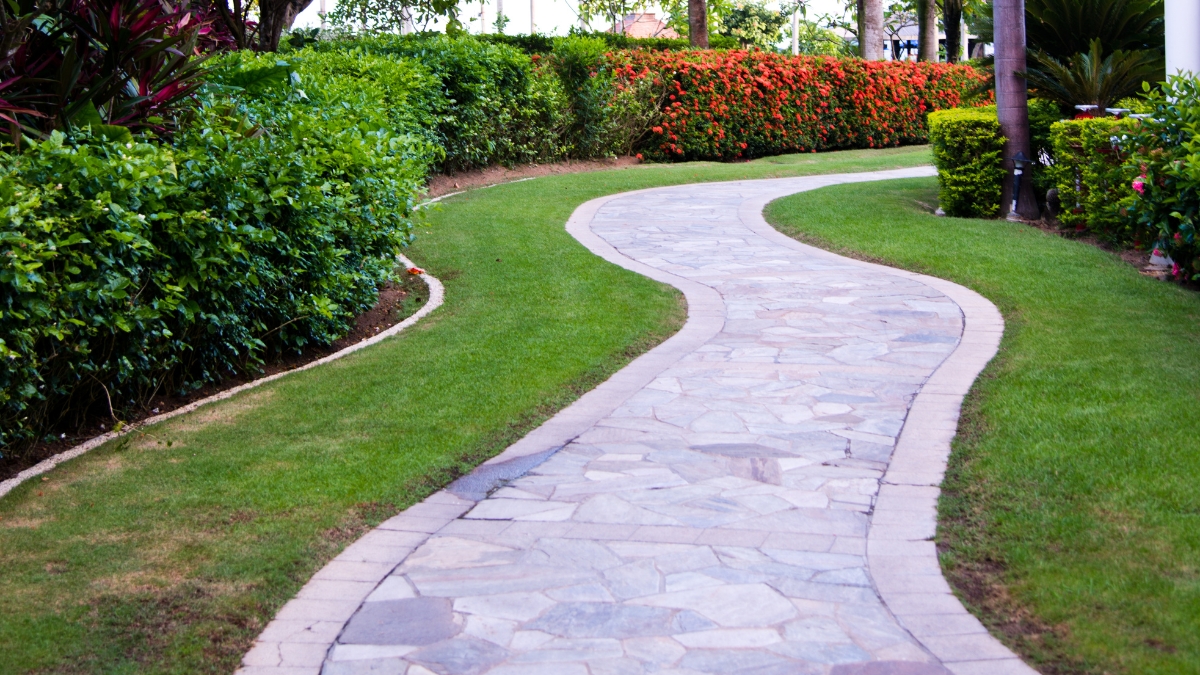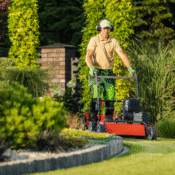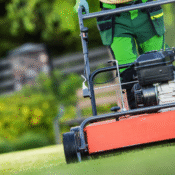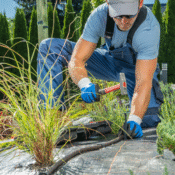
February 17, 2025
Hardscaping vs. Softscaping: Understanding the Difference and Their Benefits
Creating a beautiful and functional outdoor space involves a delicate balance of various elements. Two fundamental categories that define the character of your landscape are hardscaping and softscaping.
Hardscaping: The Foundation of Your Outdoor Space
Hardscaping refers to the non-living, constructed elements of your landscape. These are the permanent features that provide structure, functionality, and often, the backbone of the design. Examples of hardscaping elements include:
Call Lawnworkx at (706) 620 3544 today for expert guidance and tailored solutions to meet your landscaping needs.
- Patios and Decks: These provide designated areas for outdoor living, dining, and entertaining. They can be constructed from various materials like concrete, stone, wood, or composite.
- Walkways and Paths: Walkways guide movement through the landscape, connecting different areas and providing safe passage. They can be made from flagstone, gravel, brick, concrete, or other materials.
- Retaining Walls: Retaining walls serve both functional and aesthetic purposes. They help manage slopes, prevent erosion, and create level areas for planting or other features.
- Driveways: Driveways provide access to garages or parking areas and contribute to the overall curb appeal of the property.
- Fences and Walls: These define property boundaries, provide privacy, and can act as windbreaks or sound barriers.
- Water Features: Ponds, fountains, and waterfalls are considered hardscaping elements due to their constructed nature, even though they incorporate water.
- Fire Pits and Outdoor Kitchens: These create focal points for gathering and enhance outdoor living experiences.
- Steps and Stairs: These provide access to different levels of the landscape, especially in sloped areas.
- Structure and Functionality: Hardscaping provides the framework for your outdoor space, defining areas and facilitating movement.
- Durability and Longevity: Hardscaping elements are typically designed to withstand the elements and last for many years with proper maintenance.
- Increased Property Value: Well-designed hardscaping can significantly enhance the value of your property.
- Low Maintenance: While some upkeep is required, hardscaping generally requires less maintenance than softscaping.
- Versatility: Hardscaping can be customized to suit various styles and needs, from rustic to modern.
- Trees: Trees provide shade, privacy, and add vertical interest to the landscape.
- Shrubs: Shrubs can be used to create hedges, borders, or focal points.
- Flowers: Flowers add color and vibrancy to the landscape, attracting pollinators and creating visual appeal.
- Ground Cover: Ground cover helps prevent erosion, suppress weeds, and create a cohesive look.
- Lawns: Lawns provide a soft, green surface for recreation and relaxation.
- Flower Beds and Gardens: These can be used to grow flowers, vegetables, or herbs.
- Aesthetic Appeal: Softscaping adds beauty, color, and fragrance to your outdoor space.
- Environmental Benefits: Plants help purify the air, provide shade, and support local ecosystems.
- Improved Well-being: Spending time in nature has been shown to reduce stress and improve mental health.
- Increased Biodiversity: A diverse range of plants attracts birds, butterflies, and other wildlife.
- Seasonal Interest: Softscaping can be designed to provide visual interest throughout the year.
Call Lawnworkx at (706) 620 3544 today for expert guidance and tailored solutions to meet your landscaping needs.
Recent Posts
Contemporary Media Group, LLC
Simple Lawn Maintenance for a Tidy Thanksgiving Yard
Contemporary Media Group, LLC
Garden Planning with Lawn Care Strategies This October?
Contemporary Media Group, LLC




